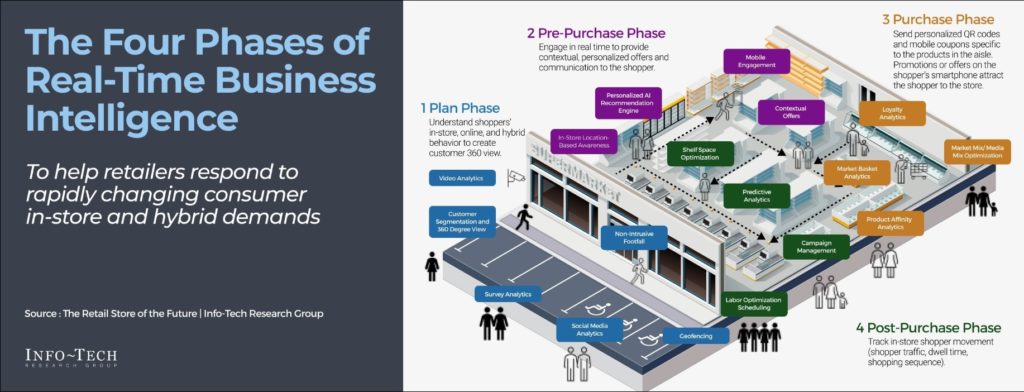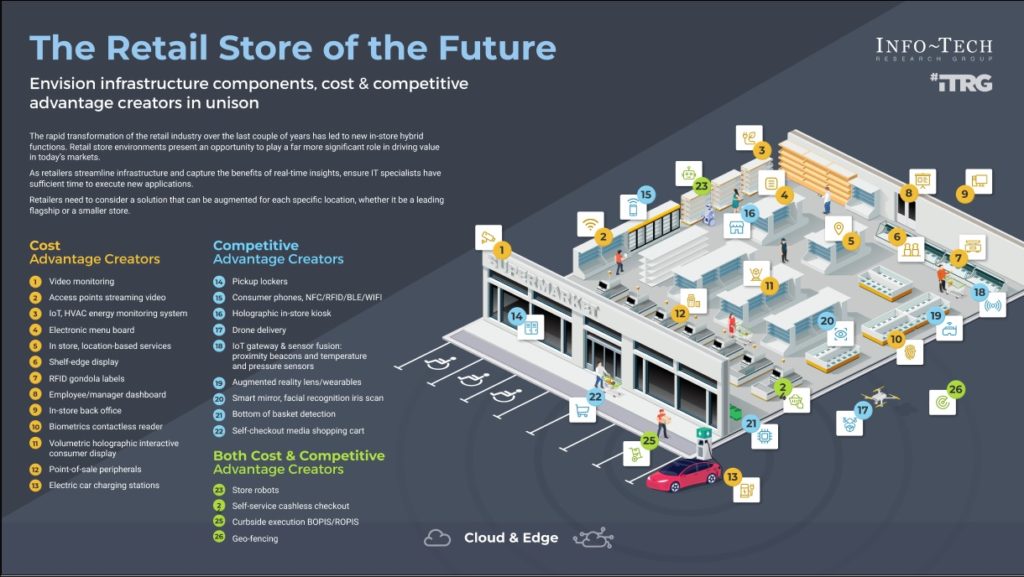As the holiday shopping season rapidly approaches, global IT research and advisory firm Info-Tech Research Group has published its newest blueprint, The Retail Store of the Future. The data-backed research is designed to help business and IT leaders identify and capitalize on the customer shopping journey across the Internet of Things (IoT), store technology, infrastructure, and environments; monetize key customer insights; and transform into a “Smart Store Hub.”

“In the last couple of years, retailers have taken extensive steps in setting their stores up to execute e-commerce orders seamlessly,” says Rahul Jaiswal, principal research director at Info-Tech Research Group. “The main reason for this transformation is the growing demand for easier shopping and quicker delivery. Retailers are working to meet these evolving needs by re-configuring the online-to-offline technology, training staff on new responsibilities, and perfecting curbside pick-up services to be competitive.”
With shoppers using technology across several channels to make their purchases, it is crucial for retailers to execute a unified in-store and hybrid customer experience to drive value in today’s highly competitive market. This is referred to as “omnichannel,” which means increasing the adoption of technology tools and processes within all aspects of an organization. It brings businesses closer to customers by understanding their needs.
“The function of the store is no longer just a channel to display and sell products,” adds Jaiswal. “Retail environments now present an opportunity to play a far greater role in promoting the brand, driving innovation, fulfilling orders, and much more. The retail store of the future provides an all-in-one connected experience to transform into a ‘Smart Store Hub.'”
Info-Tech suggests organizations follow three steps to capitalize on infrastructure technology and prepare for the future:
- Assess infrastructure integration.
Retailers need to ensure that the right infrastructure is in place to support the technologies. Too many retailers struggle to integrate new and emerging technologies into legacy infrastructure, making the customer experience worse. Often, the best decision is to upgrade the entire system to pave the way for the future. - Review service-led support models.
Software and infrastructure technology must be continually adapted to keep up with new technology developments. Associations between retailers and technology partners must shift from transactional installments to service-led support. - Develop a holistic strategy.
Retailers should reconsider all technologies while planning advantage creators. For example, many enterprises do not recognize augmented reality (AR) or virtual reality (VR) as vital to their business. However, interest in these areas is accelerating quickly as web 3.0, digital currencies, non-fungible tokens (NFTs), and the metaverse create new prospects for value creation.
Info-Tech also recommends keeping eight best practices in mind as retailers streamline infrastructure and capture the benefits of real-time insights:
- One size does not always fit all.
- Too much complexity leads to waste.
- Deployment takes a significant investment of time and capital.
- Costs are difficult to predict.
- Security must be strong – be prepared for ransomware.
- Back-up frequently.
- Manage and support monitoring services.
- Invest in IT capability at remote sites.





